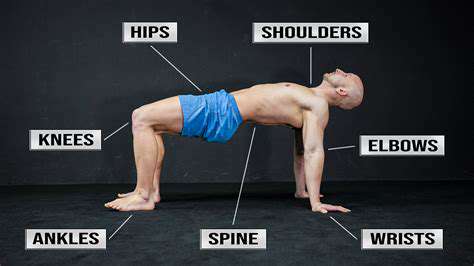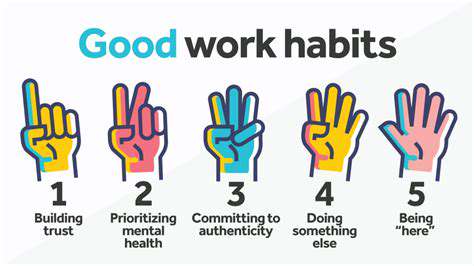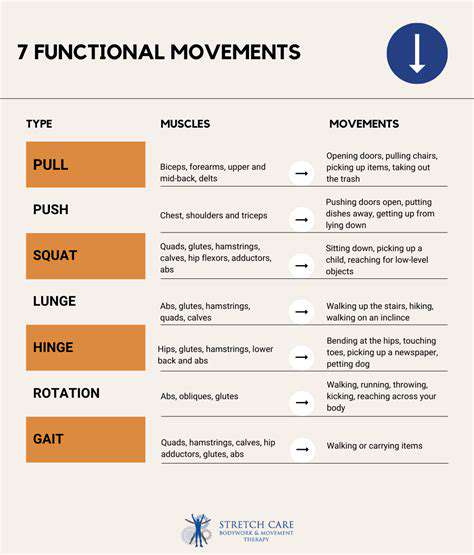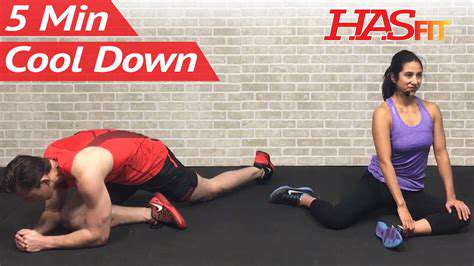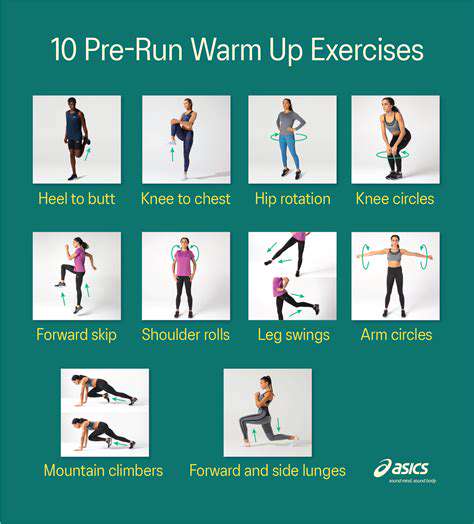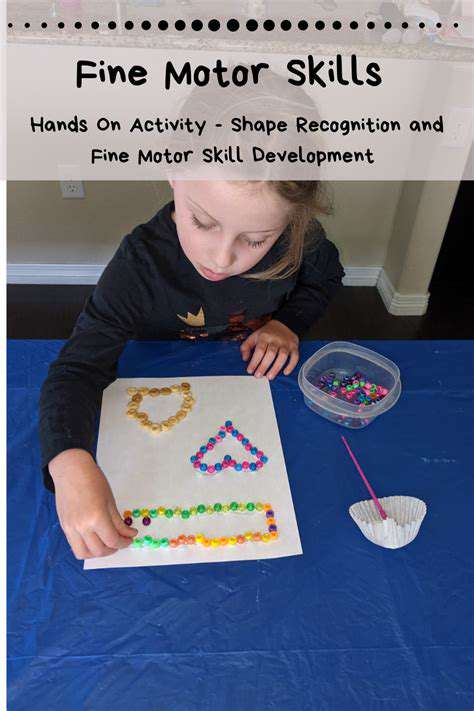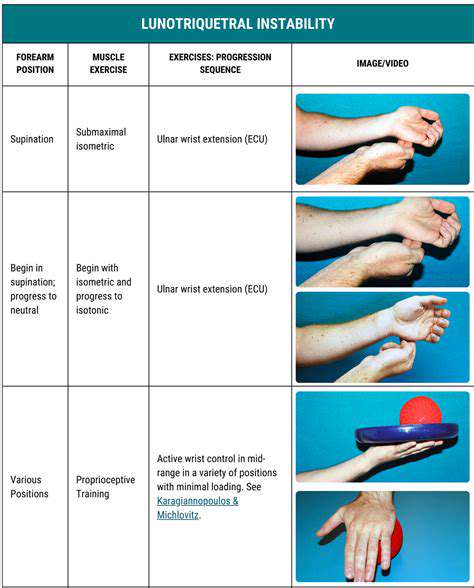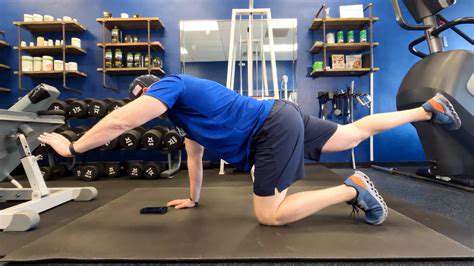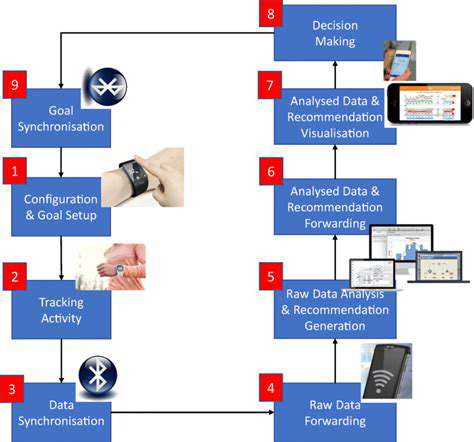How to Improve Your Grip Strength with Simple Tools
Introduction to Grip Strength Training
Benefits of Grip Strength Training
Improving grip strength isn't just about looking impressive; it offers a wide range of benefits that extend beyond aesthetics. Stronger grips contribute significantly to overall hand and forearm health, reducing the risk of injuries associated with repetitive motions and daily tasks. This translates into increased functionality throughout your daily life, from carrying groceries to performing yard work. Furthermore, enhancing grip strength can positively impact other areas of fitness, such as weightlifting, where a firm grip is crucial for maintaining proper form and lifting heavier weights.
Beyond practical applications, grip strength training can be a valuable tool for improving overall body composition. Activities like rock climbing and weightlifting, which heavily rely on grip strength, often involve significant calorie expenditure. This can contribute to weight loss and muscle gain in the forearms, hands, and surrounding muscles. Consequently, grip training can play a vital role in a comprehensive fitness regime, aiding in both functional strength and aesthetic improvements.
The benefits extend even further into the realm of injury prevention. Strengthening the muscles responsible for gripping, including the flexors and extensors of the hand and forearm, can help prevent injuries such as carpal tunnel syndrome and tendonitis. By building a robust foundation of grip strength, you're investing in the long-term health and well-being of your hands and arms.
Effective Grip Strength Training Exercises
There are numerous exercises that can be incorporated into a routine to improve grip strength. One highly effective method involves using resistance bands, which can provide progressive resistance as you gain strength. Resistance band exercises can target various grip types, from pinching to squeezing, and can be adjusted to suit different fitness levels. Consistent practice with resistance bands can lead to significant improvements in grip strength over time.
Another excellent option is the use of hand grippers. These tools come in various designs and levels of resistance, allowing for personalized workouts. Regular use of hand grippers can effectively build strength in the hand and forearm muscles, resulting in noticeable improvements in grip strength over time. Progressive overload, increasing the resistance as you get stronger, is key to maximizing results.
Beyond dedicated grip training tools, everyday activities like carrying heavy objects or performing tasks that require a firm grip can also contribute to improving grip strength. Incorporating these activities into your daily routine provides a natural way to strengthen your grips while simultaneously performing other tasks.
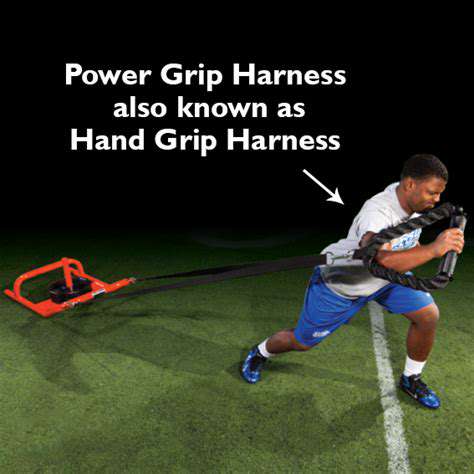
Exploring the Benefits of Everyday Objects

Unveiling the Unexpected Advantages
Everyday activities, often overlooked in our pursuit of grand adventures, hold a wealth of hidden benefits. These seemingly mundane tasks, from simple chores to routine interactions, can contribute significantly to our overall well-being and personal growth. Understanding these advantages can transform our perspective on the daily grind, fostering a deeper appreciation for the present moment. Recognizing the positive impact of seemingly insignificant actions can lead to a more fulfilling and enriching life.
The Power of Routine
Establishing and adhering to routines, even in seemingly simple tasks, has a profound impact on our mental and emotional well-being. Consistency creates stability, reducing stress and anxiety by providing a predictable structure to our days. This predictability allows us to focus on important tasks and minimizes the feeling of being overwhelmed by the demands of daily life. A well-structured routine can cultivate a sense of control and calm, fostering a positive mindset.
Cultivating Mindfulness Through Simple Acts
Paying attention to the details of everyday activities can cultivate a profound sense of mindfulness. Taking time to savor the taste of a meal, the feeling of the sun on your skin, or the sound of your favorite song can create a deeper connection to the present moment. Mindful engagement with everyday activities can foster a sense of gratitude and appreciation for the simple things in life. This practice can lead to a more fulfilling and enriching experience, transforming ordinary moments into extraordinary experiences.
Boosting Productivity and Efficiency
Even seemingly small tasks, like organizing your workspace or planning your meals, can significantly boost your productivity and efficiency throughout the day. By streamlining your routine, you can free up mental energy and allocate it more effectively to higher-priority tasks. This focused approach can lead to improved results in both personal and professional endeavors. These small changes can make a substantial difference in your overall efficiency.
Fostering Creativity and Innovation
Everyday experiences often serve as a rich source of inspiration for creative endeavors. Observing the world around us, engaging in conversations, and encountering new situations can spark innovative ideas and solutions. By paying attention to the details of everyday life, we can unlock a wellspring of inspiration, leading to breakthroughs in various fields. This seemingly mundane process can lead to extraordinary creativity.
Enhancing Relationships and Social Connections
Simple interactions, like a friendly conversation with a neighbor or a heartfelt thank-you note, can significantly strengthen relationships and foster social connections. These small gestures of kindness and consideration create a positive ripple effect, enhancing the overall sense of community and belonging. Building meaningful connections with others is a fundamental aspect of a fulfilling life. Through everyday interactions, we can strengthen the social fabric and cultivate a sense of belonging.

